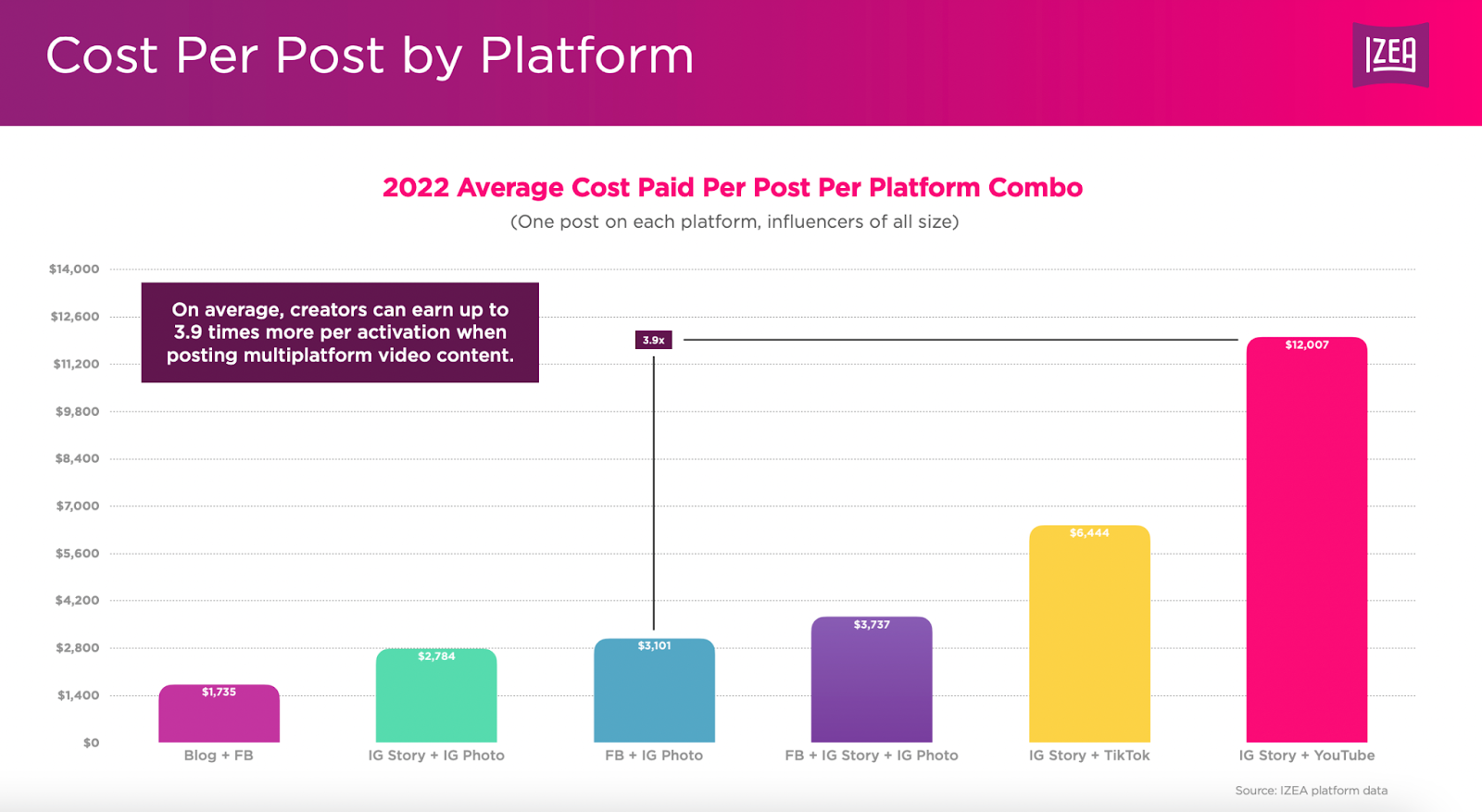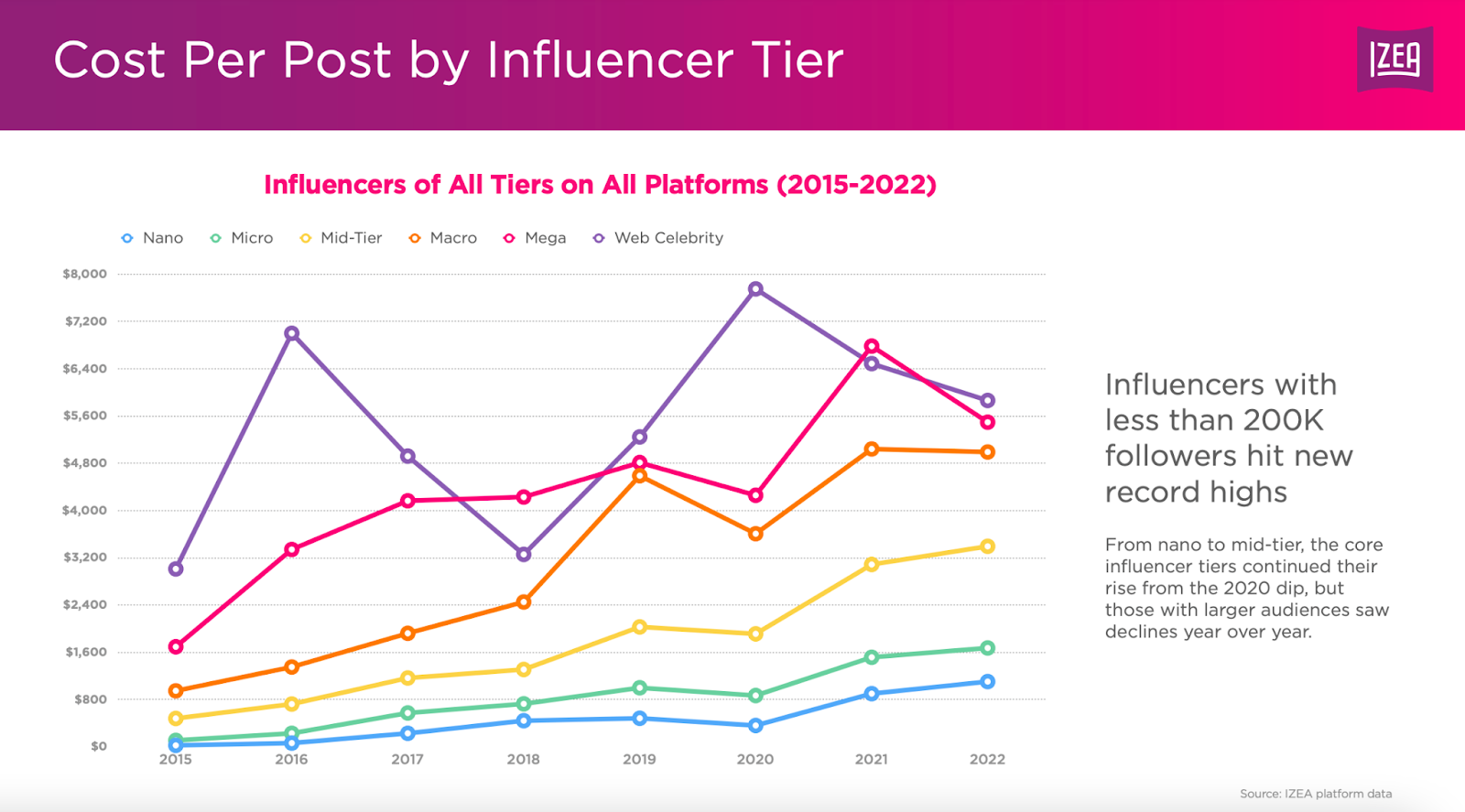Sixty-two percent of Americans watch videos on YouTube daily, and 92% use the platform weekly. With the popularity of YouTube, it’s not surprising to see more influencers set up shop on the channel. Some of the biggest YouTube influencers have earned massive followings.
For instance, Ryan’s World, a YouTube channel that follows 11-year-old Ryan Kaji, has 30M followers. His celebrity status on YouTube spawned a TV show on Nickelodeon and a line of Ryan’s World toys.
Working with a YouTube influencer to promote your product could be a big win, but what’s the cost? To help understand the world of influencer compensation on YouTube, here’s some insight.
Can you trade products for posts?
Most YouTube influencers won’t trade products for posts. Most influencers expect a payment, in addition to receiving a free product, if the campaign calls for it.
There may be a few outliers, like new-to-YouTube influencers willing to work for a free product, but it’s no longer the standard practice for social endorsements.
Factors that influence compensation
There are a lot of different factors that weigh into how much a YouTube influencer charges. Here’s a closer look at the factors that tend to drive costs up:
Audience size
As you might suspect, influencers with mega audiences often charge more. Ryan Kaji from Ryan’s World earned $29.5M in 2019 as a YouTube influencer. There is a direct correlation between compensation and audience size.
Type of content
Different types of content require different time commitments. A YouTube image is cheaper than a video. A product review is cheaper than an e-book. The more work it takes to create the content, the higher the cost.
Engagement rates
A seasoned influencer will provide engagement rates for everyday traffic and sponsored posts. Influencers with great engagement can charge more. Engagement rates between 2-3% are average, 4-6% are excellent, and anything in the teens is considered viral.
Exclusivity
If you find an influencer that connects with your audience, you may want the influencer to work with your brand exclusively. If that’s the case, an influencer must sign a non-compete agreement and receive compensation that makes up for potential lost income.
How much does a YouTube influencer charge?
While influencer compensation varies widely, both brands and influencers need to have benchmarks to reference. IZEA has studied influencer pay for years and can provide specifics.
The average cost for a sponsored post on YouTube
The average cost of a sponsored YouTube post is $2,102. Influencers charge more for video content than static content since it’s more time-consuming to create.
By comparison, Twitch influencers usually make $4,373 per post, Pinterest influencers average $1,450 per post, and Facebook influencers make $642 per post.
The average cost of a YouTube post and another platform
It’s common for brands to ask influencers to create content for multiple channels. Many brands pick two channels and collaborate with influencers to create complementary content for each platform.
The chart below examines “post combos” and compensation. As you can see, on average, YouTube and an Instagram Story cost $12,007.
The cheapest combination is a blog and Facebook post, which costs $1,735.
The average cost of a sponsored YouTube post by audience size
Audience size plays a role in campaign costs. To access audience sizes, influencers are broken into groups. The tiers are as follows:
Nano-influencer: 1,000-9,999 followers
Micro-influencer: 10,000-49,999 followers
Mid-tier influencer: 50,000-199,999 followers
Macro-influencer: 200,000-499,999 followers
Mega-influencers: 500,000-999,999 followers
Web celebrities: 1 million-plus followers
The State of the Influencer Earnings 2023 shows payment across all platforms based on an influencer’s audience tier.
Compensation increased for nano-influencers, micro-influencers, and mid-tier influencers but decreased for macro-influencers, mega-influencers, and web celebrities.
Our data support a shift we’ve seen in influencer marketing. More brands want to work with smaller, more engaged influencers over celebrities.
In 2022, a nano-influencer charged right around $1,000. The next tier up, a micro-influencer, charged around $1,600, while mid-tier influencers charged about $3,500. All of them charged more per post in 2022 than they did the previous year.
Macro-influencers lost a little ground in 2022, charging about $5,000.
Mega-influencers saw the biggest drop, from about $7,000 in 2021 to about $5,500 in 2022.
Web celebrities dropped from $6,500 in 2021 to $5,800 in 2022.
If you want to create a YouTube campaign with an influencer, review The State of Influencer Earnings from IZEA before reaching out. The report offers more specific insight into the influencer marketing economy and how much you can expect to pay per campaign.
Influencers:
Looking to partner with industry-leading brands? Create your free profile today.
Marketers:
The world’s biggest brands trust IZEA. Find which of our influencer marketing software or managed service solutions are right for you.











